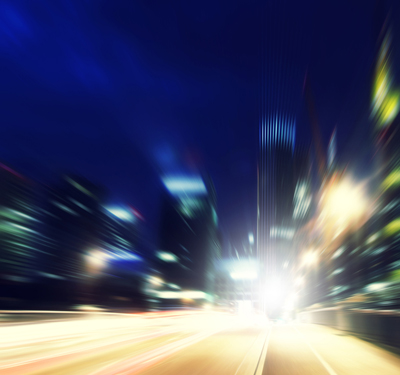

Combating Light Pollution
Posted in Engineering
Light trespass and light pollution are on the front burner of many municipalities in the U.S. due to the perception of wasted energy or impingement upon usage options of neighboring properties. There are new codified ordinances that restrict exterior light levels, pole heights, pole locations, lamp type/wattage, or watts/sq ft. The USGBC offers a Light Pollution Reduction Credit as part of LEED Certification. In addition, more clients are reevaluating their positions on light levels and controls to be environmentally friendly while controlling costs, and are allowing more flexibility in the design of outdoor projects.
Problems created by unwanted light at night fall into two categories—light trespass and light pollution. Light trespass is often defined as unwanted light that falls beyond the property line or area intended to be illuminated, while light pollution is generally defined as light that is directed upward or reflected upward from surfaces. Light trespass is most often caused by spill light, and to a lesser extent by fixture brightness. Neighbors do not want light shining in their windows at night, nor do they want their field of view interrupted by discomfort glare (situations where they can see the lamp/lens). Spill light occurs due to the excessive use of high light lumen output lamps, inadequate aiming, or incorrect reflector application. Fixture brightness can occur when a fixture provides inadequate optical control, is improperly aimed, or the housing is too shallow to shield the lamp image.
Light pollution is caused by light directed upward, whether aimed (to illuminate a facade), reflected off of a surface (parking lot or sports field), or scattered off of particles or moisture in the air. Neighbors, cities, astronomers (even NASA) and wildlife such as sea turtles are impacted by the “sky glow” artificial fog in the sky. Light pollution occurs often where pole heights are tall, fixture wattage is high, and light levels on the surface are high. The reflected light component is complex, but for comparison sake, infield dirt, a weathered asphalt parking lot, or an Astroturf field has a reflectance very similar to, or better than, the carpeting in an office.
An outdoor project with site lighting can avoid the pitfalls that create most of the problems. Solutions to light trespass and light pollution design issues must be applied on a projectbyproject basis. Apply the following at the start of all designs:
- Specify full cut-off fixtures are used to provide excellent cut-off at high viewing angles.
- Specify fixtures closest to property lines to have a “house side shield” to block the light.
- Reduce the amount of light provided to highly reflective surfaces.
- Eliminate fixtures with little or no glare control such as post-top fixtures.
- Challenge the owner about light levels required and eliminate unnecessary light fixtures.
- Provide multiple levels of lighting, or lighting controls to eliminate site-wide dusk to dawn lighting.
By staying informed about local codes and ordinances, understanding reflector optics and control options, and convincing owners to use available options for “better light” rather than “more light,” light trespass and light pollution can be effectively managed.

 Previous STORY
Previous STORY